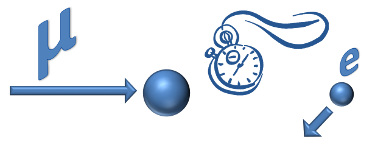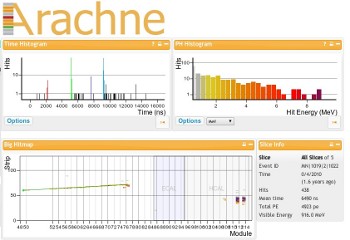In these exercises, students will study events in which a muon coming to rest inside the MINERvA detector subsequently undergoes a radioactive decay in mere microseconds.
Students learn how to identify radioactive decay events and get a feel for the random nature of the decay process. Later, a more quantitative analysis can measure the half-life of the muon. Students also examine the energies of the electrons to gain insight into the decay mechanism.
Explore the materials that detail ideas for bringing this activity into your classroom
The sample event above shows a muon beta decay. The second "time slice" in this event contains a muon skidding to a halt in the material of the MINERvA detector. The third time slice reveals a 35 Mega-electron-Volt electron emmitted by the muon when it decays radioactively 2.45 microseconds after it stopped in the detector.
This exercise provides a library of these decay events for your students to analyze.




